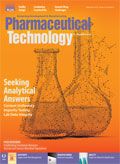Establishing Correlation Between Aerosol and Surface Microbial Populations
The following study describes a methodology to establish, control, and characterize an aerosolized bioburden within a test chamber and determine the settling rate of the bioburden.
Dmitry Kalinovsky/shutterstock.com

Pharmaceutical and nutritional package integrity is often studied by incidental contamination, via immersion or aerosol microbiological challenge tests. Aerosol tests rely upon microorganisms settling from the atmosphere onto critical surfaces. Maintenance of a contaminated atmosphere is necessary to create the conditions that will cause a constant settling rate of the test microorganisms. Both parameters--maintenance of bioburden and duration of exposure--have to be monitored and controlled. It is important to understand the limitations of aerosol tests where the microbial contamination conditions are not maintained over the duration of the test. The following study describes a methodology to establish, control, and characterize an aerosolized bioburden within a test chamber and determine the settling rate of the bioburden. The intention of this paper is to stimulate the necessary discussion for the establishment of the standard criteria for all aerosol tests to generate comparable and reproducible data.
Click here to view a PDF of this article.Peer-Reviewed
Submitted: Aug. 25, 2017
Accepted: Dec. 8, 2017
About the Authors
F. Andreas Toba* is vice president, Intact Pharma Operations, atoba@medinstill.com; David A. Miller is manager, Device Performance Engineering; Debashis Sahoo is executive vice-president, Regulators & Key Customers; and Daniel Py is chairman and CEO-all at MedInstill Development. Bryan R. Campbell is a Doctor of Osteopathic Medicine at Touro University Nevada; and James P. Agalloco is president, Agalloco & Associates, and a member of the Pharmaceutical Technology editorial advisory board.
*To whom all correspondence should be addressed.
Article Details
Pharmaceutical Technology
Vol. 42, No. 2
February 2018
Page: 44–51
Citation
When referring to this article, please cite as F.A. Toba et. al, “Establishing Correlation Between Aerosol and Surface Microbial Populations,” Pharmaceutical Technology 42 (2) 2018.

Pharmaceutical Tariffs Are Imminent: How Industry is Bracing for Impact
April 16th 2025On April 14, 2025, the Trump Administration launched a national security-driven investigation into pharmaceuticals, a move that will likely result in tariffs being placed on pharmaceutical drugs, ingredients, and other components that are imported from outside of the United States.